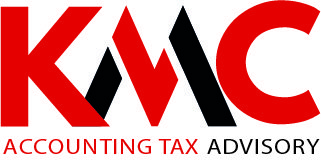Circular No. 99/2025/TT-BTC officially replaces Circular No. 200/2014/TT-BTC
9 Key points Enterprises must note
By KMC Consulting Company Limited
On 27 October 2025, the Ministry of Finance issued Circular No. 99/2025/TT-BTC guiding the Corporate accounting regime, officially replacing Circular No. 200/2014/TT-BTC after more than 11 years of implementation.
Circular 99 takes effect from 01 January 2026, applicable to fiscal years beginning on or after this date, marking a comprehensive transformation in Vietnam’s corporate accounting system.
1. Comprehensive update to the enterprise accounting regime
Circular 99 revises the entire chart of accounts, accounting principles, source documents, and financial statement presentation requirements.
The new regulations are designed to align with Vietnam Accounting Standards (VAS), orient towards IFRS convergence, and keep pace with digital transformation in the accounting and auditing sector.
2. Expanded scope and shift in accounting mindset
While Circular 200 primarily focused on bookkeeping and financial reporting, Circular 99 expands to internal management, risk control, and accounting autonomy.
Enterprises are required to establish internal accounting regulations to ensure transparency and internal control, aiming toward a modern management accounting model that not only records transactions but also supports financial decision-making.
3. More flexible rules on accounting currency
Under Articles 4–6, Vietnamese Dong (VND) remains the default accounting currency. However, enterprises may adopt a foreign currency (USD, EUR, etc.) if revenues, expenses, and financing are primarily foreign-currency based.
Currency changes must be made at the beginning of the fiscal year using the average transfer exchange rate of the bank regularly used by the enterprise.
Financial statements must still be submitted in VND to ensure transparency and consistency at the national accounting system level.
Reform on Accounting Organization and Dependent Units
Circular 99 allows flexible decentralization between the parent company, branches, and dependent units.
“Enterprises may choose to recognize capital allocated to dependent units as liabilities or equity, and may also decide whether or not to record revenue and cost of goods sold for internal transfers. These treatments are not dependent on the type of supporting documents used (invoices or internal transfer documents).”
Dependent units may choose whether or not to prepare separate financial statements, as long as the enterprise ensures full consolidation of data.
This reform enables corporate groups and multi-branch companies to optimize management processes and consolidated reporting.
5. Freedom to design accounting vouchers and new chart of accounts
A key breakthrough is that enterprises may self-design accounting vouchers as long as they are truthful, verifiable, and transparent.
When changing formats, enterprises must issue internal accounting regulations as a basis for application.
The Circular also reinforces legal validity of electronic documents, supporting digital accounting and online accounting systems.
The chart of accounts is standardized and consolidated, adding accounts for exchange differences, internal transactions, treasury shares, and derivatives aligned with IFRS – significantly impacting accounting software and ERP systems.
6. Financial statements – transparency and “financial storytelling”
The four basic financial statements remain, but explanatory notes are substantially expanded, requiring clear disclosure of:
- Basis for determining accounting currency
- Impact of exchange rate fluctuations
- Consolidation elements and financial risks
The Ministry of Finance emphasizes that financial statements must not only present data but also provide a comprehensive view of business operations and financial health.
7. What enterprises need to prepare before 2026
- Review ERP and accounting systems to update accounts and reporting templates
- Train accounting and auditing staff on new requirements
- Develop a data transition plan from 2025 → 2026 to ensure continuity
- Assess the overall impact of Circular 99 on current financial processes
Circular No. 99/2025/TT-BTC represents a comprehensive reform of the enterprise accounting regime, shifting focus from “bookkeeping” to “financial management – risk control – international integration”.
With the principle “Autonomy – Transparency – Integration” this is the time for enterprises to proactively review and prepare their accounting systems to meet new-generation accounting standards from 2026.
For more detailed information about this or related Accounting Advisory, please don't hesitate to contact us.
Website: https://kmc.vn/
Hotline: +84 81 489 4789 or +84 91 988 9331
Email: info@kmc.vn

